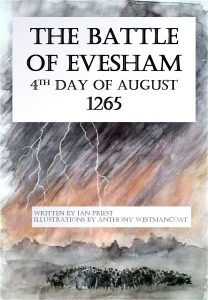
Written by Ian Priest and with illustrations and additional material by Tony Westmancoat is an introduction to the Battle of Evesham for younger readers, with illustrations to colour. Ian and Tony are members of Circa 1265, a living history and re-enactment group focused on the Second Baronial Revolt and the Battle of Evesham.
£5.50
For many, Kilpeck church is the quintessential example of an English parish church. Its very appearance has been influenced through restoration by an antiquarian’s view on how the medieval church should look. In this building the efforts and agendas of...
Four translations of accounts of the Battle of Evesham of 1265 from Osney, Wykes Trivet and the Evesham Chronicle. All of them are important sources and extracts from them are quite often quoted or referred to by historians. Recently translated...
Simon de Montfort was a man in pursuit of an elusive dream, a figure of paradox even today. Medieval chroniclers say that he was handsome, intelligent, fair-minded and able, but his enemies found him arrogant, cold and driven by ambition...
What happened to Simon de Montfort, leader of the Reformers, after his defeat at the Battle of Evesham? Was Earl Simon captured alive and later murdered? Does this explain the murder of Henry of Almain by Simon’s sons, Simon and...
The fate of the remains of Simon de Montfort, earl of Leicester, has long been a mystery. Since his death at the battle of Evesham in 1265, one foot of the dismembered corpse has been confidently traced to Alnwick abbey...
William de Nangis’ account of the Battle of Evesham is an important source predating some of the other chronicler accounts. Although some sentences and the paragraph describing the death of Simon de Montfort have been translated, for example by John...
Privacy Policy | Cookie Policy & Settings I Copyright © 2023 The Simon de Montfort Society I Charity number: 1092319 I Website Design: Abbey Gate Media